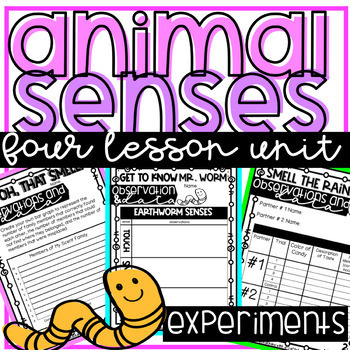Animal and Human Senses Unit using the 5 Senses with Engaging Experiments
- PDF
What educators are saying
Description
Just like humans, animals rely on their senses for survival. With this activity, your students will be exploring the different ways that animals use their senses to help interpret the world around them and, ultimately, survive!
Your students will be completing hands on science experiments to help them better understand the importance of senses and the role they play in many animals' survival.
This product includes:
- 4 Engaging and Hands on Lessons
- 15 Pages of Lesson Plans and Teacher Tips
- Student Workbook Pages - to invoke deep discussion and observation
These experiments are for PERSONAL USE ONLY! Please read terms when purchasing item for more information.
___________________________________________________________________
I hope you and your class love it as much as mine does!
- To see my products in action - check out my Instagram!
- Follow my store for more engaging activities and teaching tools!
Please contact me with any questions!
Check out my other STEM Products!
You can also find me on:
Thank you,
©Teaching with a Caffeine Queen





